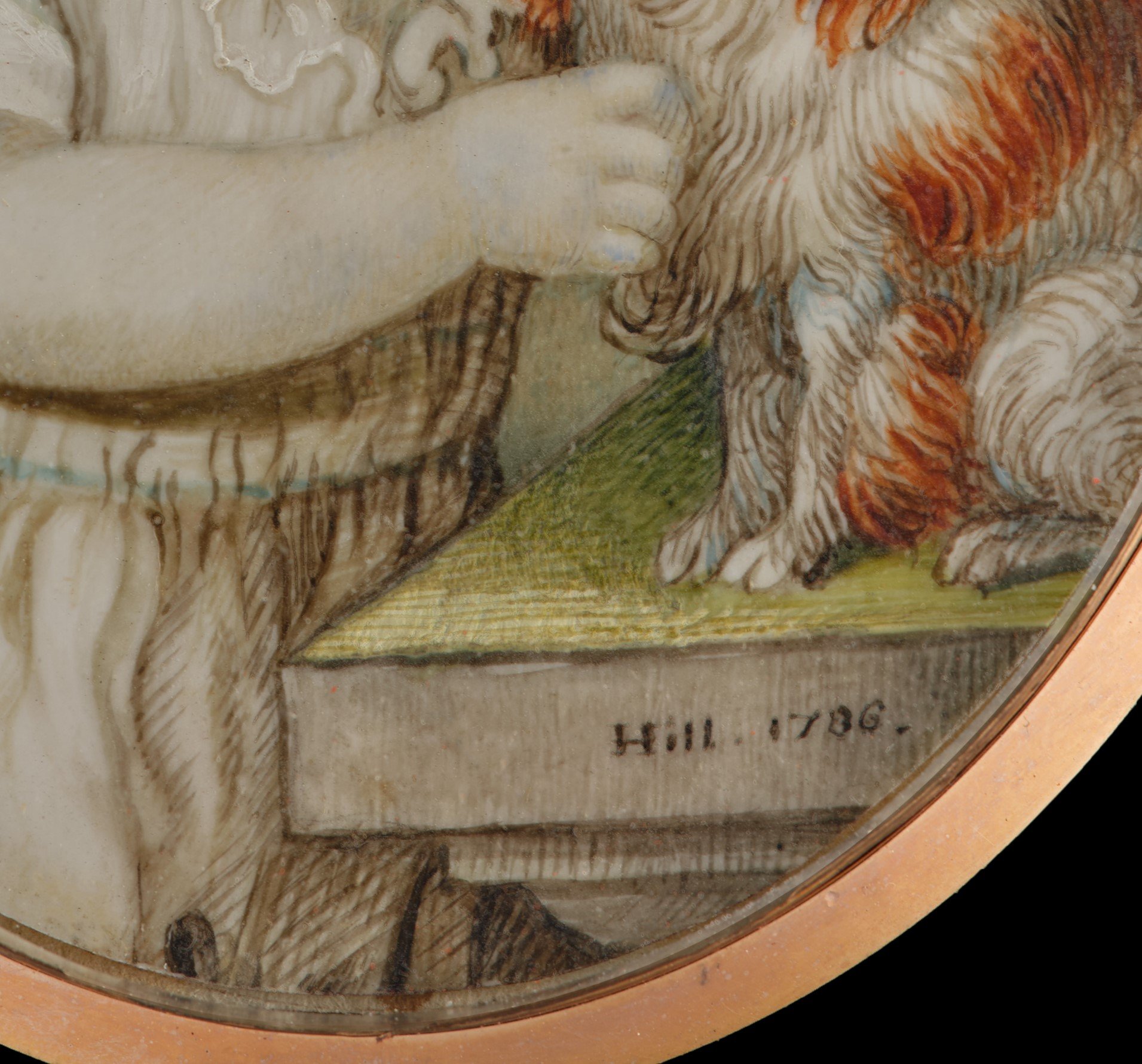DIANA HILL (nèe Dietz) (circa 1765-1844)
Portrait miniature of a Child, possibly of the Graham family, wearing white cotton smock and holding a spaniel on a stone plinth; dated 1786
Watercolour on ivory
Ivory registration number: WRYWUBR7
Signed and dated ‘Hill/ 1786’
Later gold plated frame
Oval, 3 ins
Provenance: Private Collection, UK
SOLD
“To travel so far unaccompanied, to a country perceived as dangerous with its inhospitable climate, rampant with disease, reveals something of Hill’s ambition and tenacity.…”
The sitter may be related to the Graham family of Kinross House, who appear to have commissioned Diana, then Dietz, upon her arrival in Calcutta in 1786. Three other miniatures of the Graham family by Hill were auctioned Christie’s, London, 30 March 2011 – all with distinctive red hair.[1]
For almost a decade prior to her departure for India, Hill exhibited at the Royal Academy, changing her surname from Dietz after her marriage to Haydock Hill in 1781. The marriage was short-lived, as Diana’s husband died at the age of thirty-five in September 1785.
Widowed with two young children, Hill decided to seek work in India, following closely in the footsteps of John Smart (1741-1811) who had left for Madras the previous year. To travel so far unaccompanied, to a country perceived as dangerous with its inhospitable climate, rampant with disease, reveals something of Hill’s ambition and tenacity. However, it was a shrewd career move - her connections with the East India Company through her brother in law, John Hill, proved vital in securing commissions, including a portrait miniature of Charles Cornwallis, 1st Marquess Cornwallis, in 1786. Cornwallis had been appointed in February 1786 to serve as both Commander-in-Chief of British India and Governor of the Presidency of Fort William, also known as the Bengal Presidency.
Two years later, Hill’s continuing progress was noted by the painter Thomas Daniell, who in November 1788 wrote to the artist Ozias Humphry, who had returned to England: 'Mrs. Hill is still making handsome faces, in the house you lived in last in Calcutta'.
For the most part, Hill’s career followed closely that of her male peers. She was trained by Jeremiah Meyer, who held a position at court as official painter to George III. From 1777 she regularly exhibited at the Royal Academy from Angel Court in Windmill Street, and from these records a distinctly female following emerges. Her move to India in the mid-1780s coincided with other (male) artists similarly seeking the patronage of those in the employ of the East India Company, including Johan Zoffany, John Smart and Ozias Humphry. Hill’s success during this period aroused jealousy amongst other artists, with Humphry in particular indicating the advantage he felt she had as a rare female artist in a landscape dominated by men, firstly by describing her as a ‘pretty young widow with two young children’ and secondly declaring: he would 'rather have had all the male painters in England landed in Bengal than a single woman'.
Where her career differed was in the breaks which corresponded with her two marriages, as well as in the demographic and subject matter she painted. After her second marriage in 1788, she gave up painting professionally, although a portrait of her husband exists dated 1791.
[1] Christie’s, London, 30 March 2011, Kinross House, Scotland and property removed from the London residence of Mrs. Winston Spencer Churchill.





